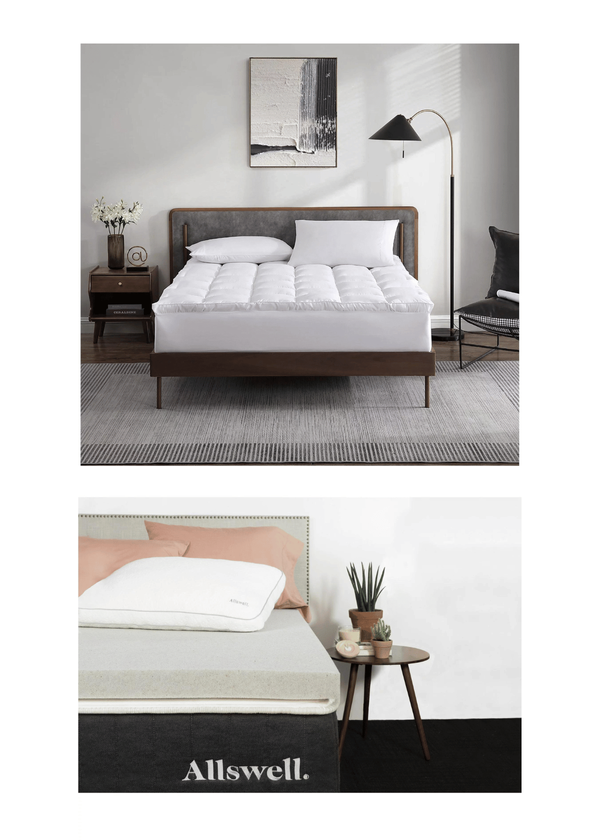(Last Update: 04/14/2025)
Imagine the perfect room, whether a luxurious hotel suite or a cozy main bedroom at home. What’s the first thing that comes to mind?
Chances are, it’s the comfort and size of the bed. Choosing the right mattress size is crucial for maximizing comfort and functionality in any room.
This blog post will guide you through selecting the perfect mattress size for your room, considering various factors, such as room dimensions, furniture, and personal preferences.
Designing for Comfort: How Room Size and Function Influence Mattress Choice
Choosing a mattress based on standard room size is just the beginning. Whether you're outfitting family rooms, smaller homes, or larger homes, it's important to assess available space, floor area, and typical dimensions.
In compact spaces or odd-shaped rooms, choosing multi-functional furniture and ensuring there's enough space for movement is essential.
Common room sizes must accommodate not only beds but also essential furniture like nightstands or dressers, all while meeting safety standards and building codes.
Guidelines For Choosing the Right Mattress for Your Room Size
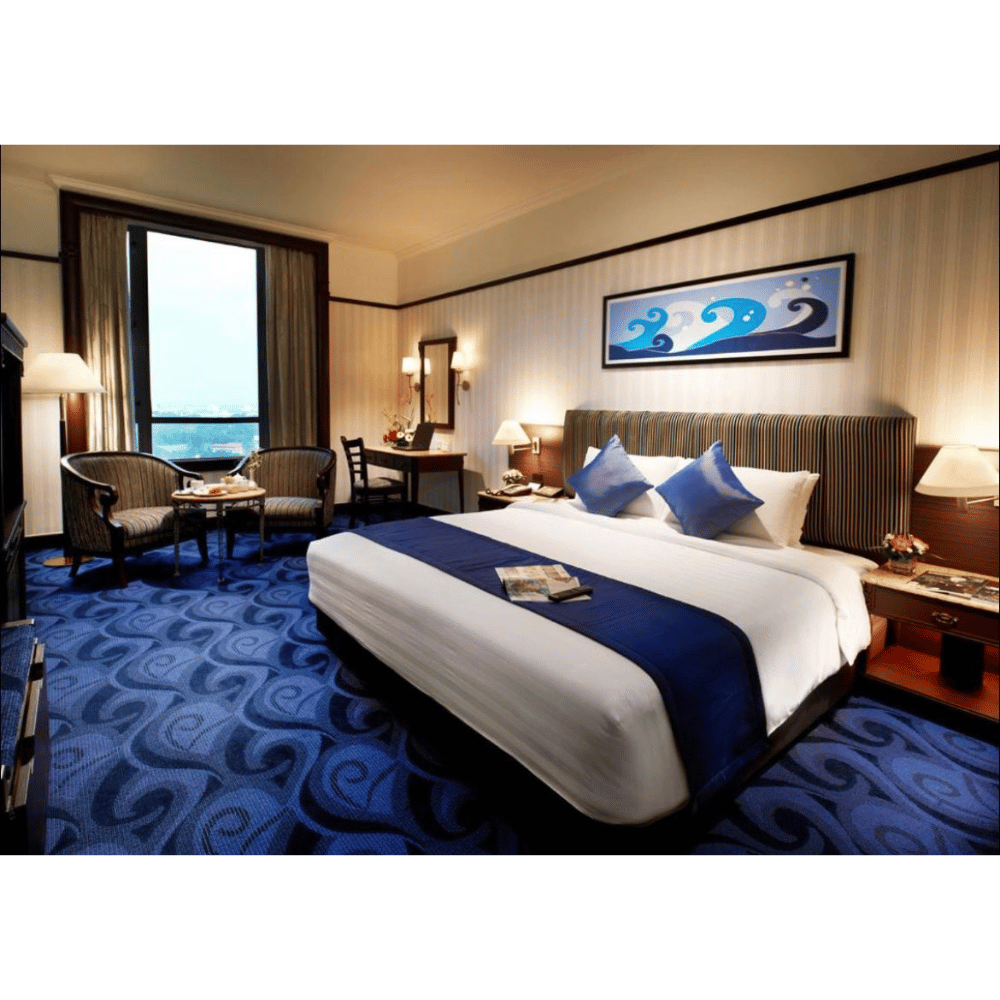
Selecting the right mattress size ensures maximum comfort and functionality, particularly when dealing with an average room capacity. Considers aspects like the length of your walls, the location of features like a sink or pantry, the room’s square footage, and your budget.
For example, the dimension of a guest room in a house or hotel may determine the range of suitable mattresses.
Prices can vary. Whether in Europe, America, Africa, or Asia, cleanliness, walking space, the room’s square footage, function, and the desire for comfort play a significant role in this decision.
Choosing the right mattress size for your room is more than just personal preference—it’s about ensuring your sleep space remains comfortable, functional, and visually balanced. Below is a detailed guide to help you select the best mattress size for your room layout, lifestyle, and sleeping habits.
Twin Mattress (38" x 75")
The Twin mattress is the smallest standard size and is ideal for solo sleepers, particularly children, teens, or adults in smaller living spaces.
Best for: Children, guest rooms, single sleepers in studio apartmentsMinimum room size: 7' x 10'
Pros:
- Compact and space-saving
- Budget-friendly
- Fits in bunk beds and trundle beds
Cons:
- Too narrow for most adults
- Not suitable for couples or co-sleeping
Ideal room types: Small bedrooms, shared children’s rooms, guest rooms
Twin XL Mattress (38" x 80")
A Twin XL offers five extra inches of legroom compared to a standard Twin, making it more comfortable for taller individuals.
Best for: Teenagers, college dorm rooms, taller single adultsMinimum room size: 8' x 10'
Pros:
- Extra legroom without taking up more width
- Compatible with adjustable bases
- Popular in college dorms
Cons:
- Limited bedding options
- Not suited for couples
Ideal room types: Dormitories, small apartments, transitional teen rooms
Full Mattress (54" x 75")
Full mattresses, also known as double beds, provide more width than a Twin but still fall short for co-sleeping adults who need more space.
Best for: Single adults, teenagers, guest roomsMinimum room size: 10' x 11'
Pros:
- More spacious than a Twin or Twin XL
- Great for single adults who need more sleeping area
- Fits in most medium-sized rooms
Cons:
- Too narrow for most couples
- Not ideal for sharing with pets or children
Ideal room types: Medium bedrooms, guest spaces, young adult rooms0.
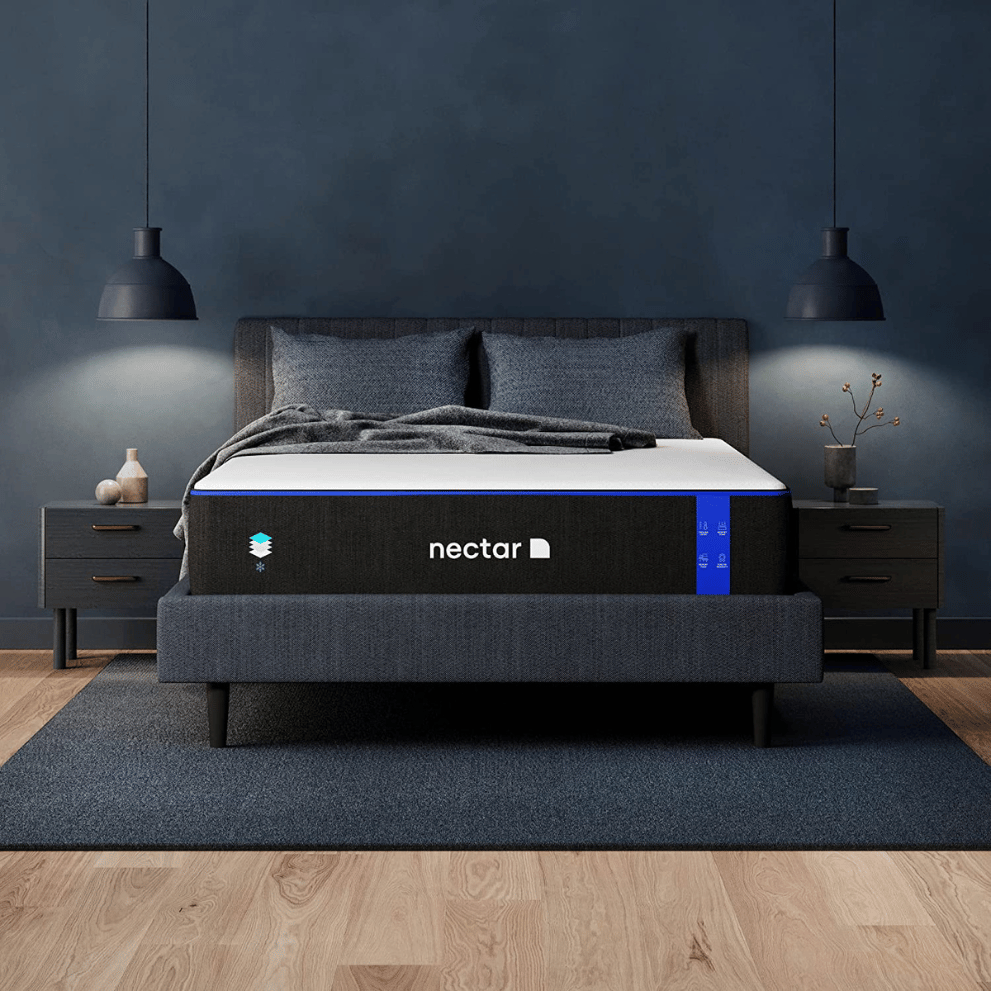
Queen Mattress (60" x 80")
The Queen is the most popular mattress size in the U.S., balancing space and comfort without overwhelming most rooms.
Best for: Couples, sprawling single sleepers, master bedroomsMinimum room size: 10' x 10'
Pros:
- Versatile for both singles and couples
- Widely available with extensive bedding options
- Compatible with most bedroom furniture setups
Cons:
- Can feel tight for couples who prefer more personal space
- Takes up more room in small bedrooms
Ideal room types: Master bedrooms, large guest rooms, apartments
King Mattress (76" x 80")
A King mattress offers the most sleeping surface, making it perfect for couples who want maximum space or families who co-sleep.
Best for: Couples, families with pets or childrenMinimum room size: 12' x 12'
Pros:
- Luxurious sleeping space
- Offers plenty of room for co-sleeping
- Ideal for larger master bedrooms
Cons:
- Bulky and heavy—difficult to move
- May not fit through tight staircases or hallways
- Requires more floor space
Ideal room types: Spacious master bedrooms, luxury suites
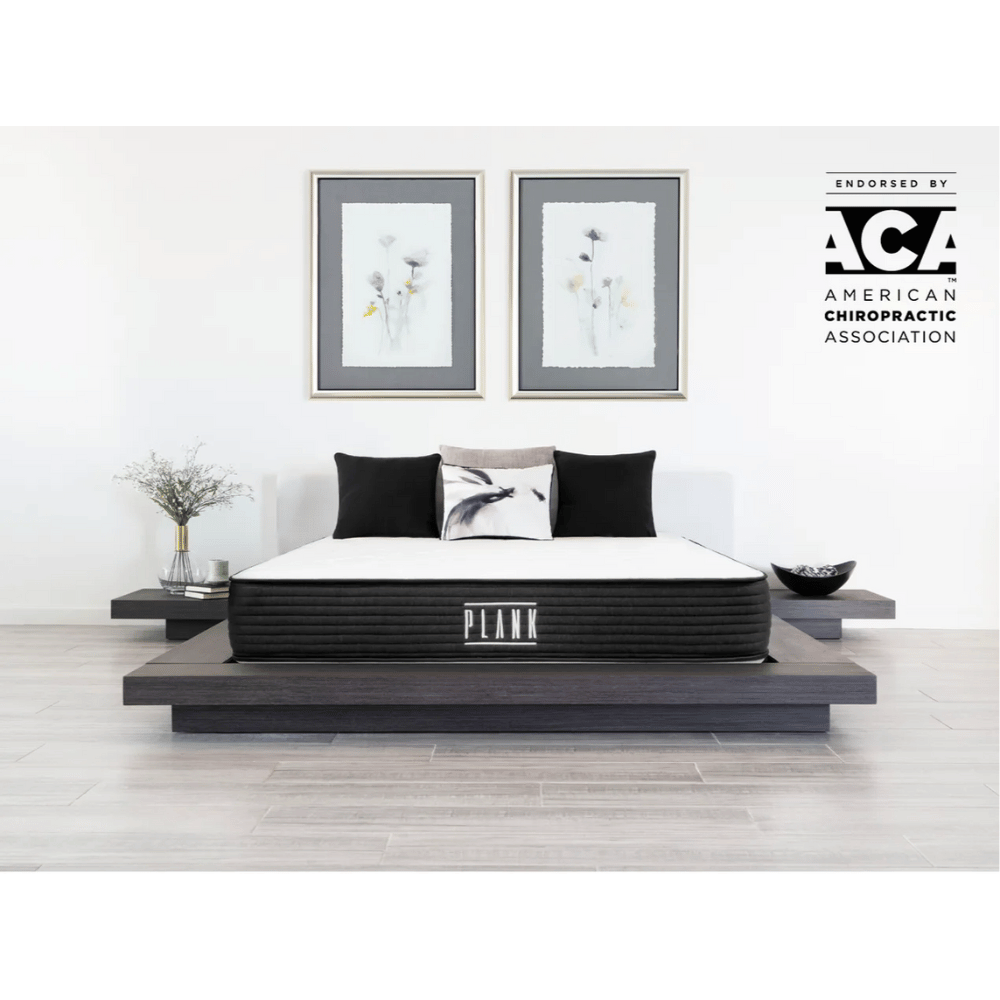
California King Mattress (72" x 84")
Slightly narrower but longer than a standard King, the California King is designed with taller sleepers in mind.
Best for: Tall individuals, couples who value legroomMinimum room size: 12' x 12'
Pros:
- Ideal for individuals over 6'2"
- Sleek dimensions suitable for long, narrow rooms
- Same great surface area as a King, distributed differently
Cons:
- Narrower than a standard King
- Less common in bedding and accessories
- May be harder to find in showrooms
Ideal room types: Large master bedrooms with a narrow layout, high-ceiling spaces
Mattress Size Comparison Table
Using the guide above, you can confidently select a mattress size that suits your comfort preferences and maintains a balanced, functional bedroom layout.

SMALL ROOMS
Small rooms require a careful floor plan to ensure the mattress dimension doesn’t overwhelm the space, leaving enough room for essential furnishings and walking space.
A Twin or Twin XL mattress is the most suitable option for smaller rooms, providing adequate sleeping spots without overpowering the limited floor space. This will guarantee a comfortable and functional environment for you and your guest's satisfaction.
MEDIUM ROOMS
Medium-sized rooms, such as those in budget hotels, provide more flexibility when choosing a mattress size.
A queen mattress is usually the most appropriate option for these rooms, as it offers sufficient sleeping spots while leaving a place for amenities. However, full and king mattresses can also be accommodated in medium-sized hotel rooms for guests.
Large Rooms and Hotel Room Sizes
Large rooms, such as master suites or bedrooms, with a minimum area of 10 by 10 feet. An area with a dimension of 10 feet by 10 feet would be 100 square feet. It can comfortably accommodate larger mattress sizes.
These spacious rooms may also include a larger bathroom, making them ideal for families or luxurious hotel room sizes and suites.
However, it’s essential to maintain a balanced bedroom design and avoid overcrowding the area with oversized furnishings, tables, and decor, especially when considering hotel room sizes compared to the third-world average hotel room capacity.
Maximizing Natural Light
In a standard bedroom, natural light is crucial in making the space feel larger. Position your bed against one wall to allow light to flow freely. This setup enhances the room's openness and complements various bedroom designs, creating a bright and inviting atmosphere.
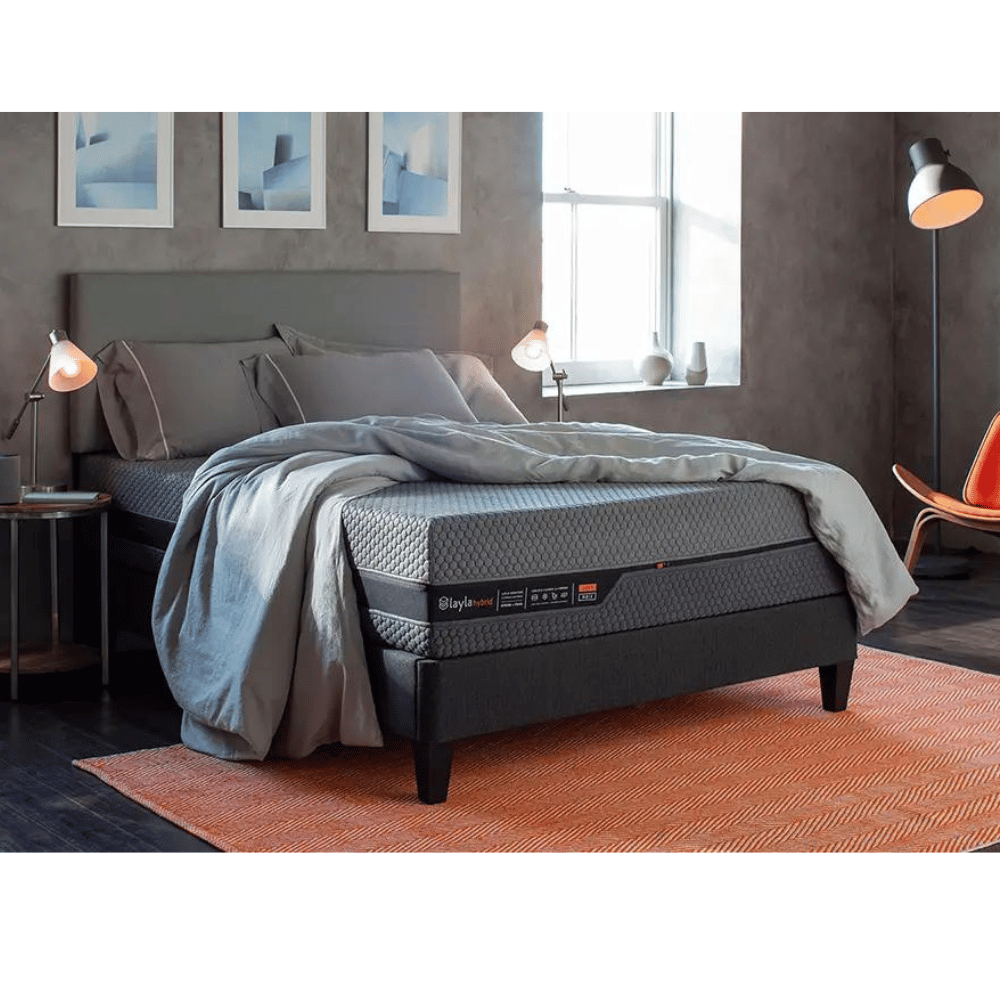
Furniture Layout and Clearance
Selecting the right mattress is only one piece of the bedroom puzzle. How your bed interacts with the other furniture in your space—and how much room is left to move around—can significantly impact comfort, aesthetics, and functionality. Here’s how to strike the perfect balance.
Clearance Recommendations
Proper clearance around your bed is essential for both safety and comfort. According to spatial planning standards and guidance from design authorities like CNET and Purple, the ideal space to leave around each side of the bed is at least 24 to 36 inches.
- At least 24 inches on the sides: This allows for comfortable walking and access to the bed.
- 36 inches at the foot of the bed: This is especially important if your bed faces a dresser, bench, or entertainment unit.
- Pathways to doors and closets: Keep 36 inches or more to avoid crowding functional entryways.
Aim for a minimum of 18 inches on the sides in smaller rooms where space is tight, but this should be considered the absolute minimum.
Furniture Placement Tips
Smart furniture arrangement enhances flow and makes a room feel larger and more open.
- Nightstands: Ideally placed on either side of the bed, nightstands should match the bed’s height (or come within 2–3 inches). If space is limited, opt for floating shelves or wall-mounted units.
- Dressers and Armoires: Place these pieces at least 36 inches away from the foot of the bed. To save floor space, choose narrow, tall dressers for small rooms.
- Benches or Trunks: If placed at the end of the bed, ensure at least 18 inches of clearance between the bench and nearby furniture or walls.
- Lamps and Outlets: When planning the layout, align outlets with nightstands to prevent visible cords and clunky lamp arrangements.
Room Functionality Considerations
Mattress size directly influences what else you can do in your bedroom. Larger mattresses can cramp smaller rooms, limiting their use beyond sleep.
- Small rooms: Opt for a Full or Queen mattress to leave space for desks, storage, or reading nooks.
- Multi-use bedrooms: Twin XL or Murphy beds provide flexibility in guest rooms that double as offices.
- Master bedrooms: King and California King beds work well in spacious primary suites but require mindful furniture scaling to avoid overcrowding.
- Storage solutions: Consider beds with built-in drawers or under-bed storage to reduce the need for additional furniture.
Ultimately, the goal is to maintain a balance between comfort and function. Choosing the right mattress size—and planning the furniture around it—can help ensure your bedroom feels both spacious and serene, no matter its dimensions.
Understanding Mattress Sizes

Selecting the right mattress for your room size is a process that should account for the room's function and features. A hotel's guest room dimensions can see the range of suitable mattresses. Aspects like walls, available places on one side, and pantry or bathroom location can influence your decision-making.
Mattresses may come in different sizes, and understanding the measurements of each type can help you choose the best fit for your room. From space-saving twin mattresses to luxurious king-sized beds, there’s a mattress size to suit every room.
By familiarizing yourself with the standard size measurements of each mattress, you can make an informed decision when selecting the perfect bed. Consider whether there is enough room, furnishings placement, bathroom, and overall room arrangement.
Step-by-Step Mattress Selection Guide
Choosing a mattress involves more than just picking a size—it requires thoughtful planning to ensure the bed integrates well with your space, meets your comfort needs, and supports your lifestyle. Here’s a step-by-step guide inspired by insights from Amerisleep, American Mattress, and Beloit Mattress to help you make an informed decision.
1. Measure Your Room
Accurate measurements are essential before purchasing a mattress. Use a tape measure to determine the length and width of your room. Don’t forget to account for:
- Doorways and entry points
- Window placement
- Built-in closets and their swing radius
Mark these dimensions on paper or a room layout tool to ensure you understand how much usable floor space is available.
2. Assess Your Needs
Your mattress choice should reflect your personal sleep preferences and lifestyle. According to recommendations from Purple, CNET, and Tom’s Guide:
- Number of sleepers: A couple will likely need at least a Queen-size bed.
- Sleeping habits: If you toss and turn, choose a larger mattress.
- Future needs: Consider growth (e.g., children transitioning into larger beds).
- Health concerns: Factor in back pain, allergies, or other sleep-related issues.
3. Evaluate Existing Furniture
Take inventory of your current furniture and determine what will remain in the room. Measure:
- Dressers, desks, and chairs
- Nightstands and storage units
- Any wall-mounted elements (e.g., sconces or art)
Ensure the bed won’t block access to closets or windows. Prioritize multipurpose furniture if space is limited.
4. Plan the Room Layout
Visualizing the final layout is key. Sketch a scaled floor plan or use an online room planner like Roomstyler or Planner 5D. Place cutouts or outlines of furniture to:
- Test different arrangements
- Ensure recommended clearances around the bed (24–36 inches)
- Optimize space for both aesthetics and function
If you have a smaller bedroom, consider flexible solutions like storage beds or platform beds, which eliminate the need for bulky box springs.
This step-by-step process transforms mattress shopping from guesswork into a confident, well-informed decision.
Suggested Tools and Resources
To take the guesswork out of mattress selection and room planning, a few digital tools can help you visualize, measure, and decide confidently. These resources are either free or offer free versions to get started:
Online Room Planners
Use these platforms to digitally arrange furniture, test mattress sizes, and simulate room layouts:
- Planner 5D (planner5d.com): User-friendly drag-and-drop interface with 2D/3D views.
- Roomstyler (roomstyler.com): Great for creating detailed layouts, including custom dimensions.
- IKEA Home Planner: Ideal for combining bed dimensions with real furniture products.
These tools allow you to recreate your bedroom virtually and try different mattress sizes to find the best fit without moving furniture.
Mattress Size Calculators
Find the right mattress by inputting your room’s dimensions and sleep preferences:
- Amerisleep Mattress Size Calculator (amerisleep.com)
- Sleepopolis Mattress Size Guide (sleepopolis.com)
- MattressNerd Size Comparison Tool (mattressnerd.com)
Using tools like these, recommended by The Sun and other experts, will help you avoid costly sizing mistakes and ensure your sleep space is optimized for comfort and flow.
TWIN MATTRESSES
Mattresses come in different sizes, and understanding the measurements of each type can help you choose the best fit for your place. From space-saving twin mattresses to luxurious king-sized beds, there’s a mattress dimension to suit every room.
By familiarizing yourself with the standard size measurements of each mattress, you can make an informed decision when selecting the perfect bed, considering factors like room dimensions and overall room format.
FULL MATTRESSES
Full mattresses, measuring approximately 54 x 75 inches, are suitable for single adults, teenagers, or guests. They provide more sleeping areas than twin mattresses.
When selecting a full mattress, it’s crucial to consider factors such as mattress type, firmness level, materials used, the room's dimension, location, and the number of spots available.
QUEEN MATTRESSES
Queen mattresses, measuring approximately 60 x 80 inches on one side, are popular for couples or guests who want more sleeping areas.
These mattresses offer more sleeping areas than full mattresses, making them an ideal option for those wanting additional room to move during the night. Standard hotel rooms typically feature a Queen mattress.
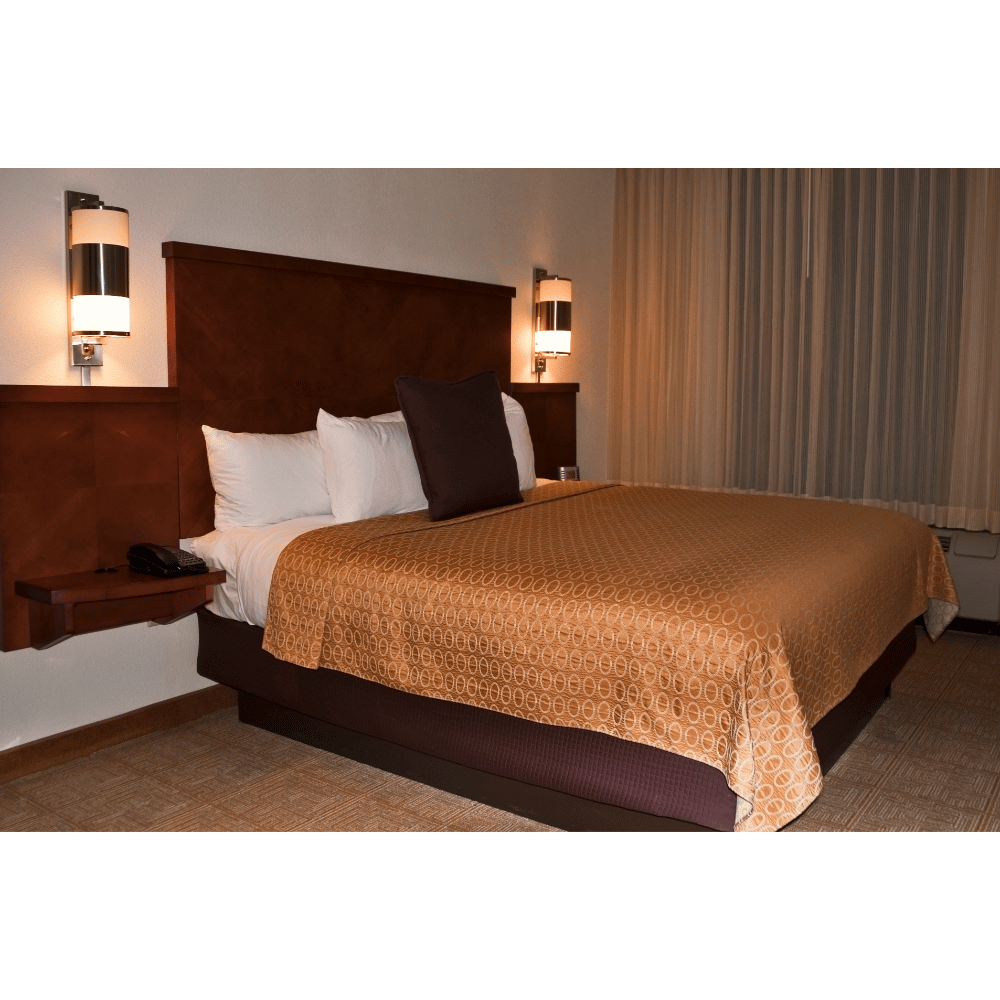
KING SIZE BED
King mattresses provide ample area for couples or guests who prefer a larger sleeping area, measuring approximately 76 x 80 inches.
These spacious mattresses offer plenty of place for movement without disturbing a partner. Most hotel rooms also feature King-sized mattresses.
CALIFORNIA KING MATTRESSES
California king mattresses are longer and narrower than standard king-size mattresses, measuring approximately 72 x 84 inches, and are ideal for taller individuals or rooms with unique measurements.
These mattresses provide additional length compared to standard king-size mattresses, making them a great option for those requiring more leg place.
They are less commonly used in a hotel room than standard King or Queen mattresses.
Additional Considerations
Maximizing Versatility: Why Mattress Planning Matters in Multi-Use Rooms
In today's homes, rooms often serve multiple purposes—a bedroom might double as a home office, or a dining room might be sectioned off as a separate room for guests.
This is why understanding your room’s specific needs is vital. Before choosing a mattress, measure the sq ft and consider standard dimensions versus the flexibility of your layout.
Layered lighting, light colors, and space-saving bed solutions can help optimize both style and practicality without sacrificing comfort.
When choosing a mattress, it's crucial to account for room capacity, shape, and walking spot. For example, in a hotel or family home, the decor, including a standard table, coffee table, bathroom, or wall bars, plays a role in determining the range of suitable mattresses.
It's optimal to consider these factors while in-store to make an informed decision about the room's comfort and aesthetics.
ROOM SHAPE
Room shape plays a significant role in deciding the appropriate mattress size for you or your guests. Traditional rectangular or square footage rooms often allow for more flexibility when choosing mattress sizes, ranging from twin to California king.
However, rooms with irregular shapes, niches, or multiple purposes might require a more strategic approach. Alcoves or angular corners could benefit from smaller mattress sizes, like twins or twin XL.
FURNISHINGS AND DECOR
Furniture and decor can impact the overall feel and functionality of the living room, so choosing a mattress size that complements the room’s design is important.
When selecting furnishings and decor, consider the standard size and placement, the type of flooring, and the amount of wall space available, ensuring the mattress size fits comfortably within the room’s setup.
Utilizing Vertical Space
For bedrooms with limited square footage, utilizing vertical space is essential. Opt for smaller pieces of furniture and consider a loft bed to free up the main area. This approach maximizes floor space and adds a unique touch to standard bedroom sizes.
Incorporating Walk-In Closets
Walk-in closets can be a game-changer in standard bedroom designs. They help keep the main area clutter-free, making the room appear larger. In-depth planning of these closets ensures efficient use of space, providing ample storage without compromising the bedroom's overall aesthetic.
Walking space is pivotal in room configuration and can drastically influence comfort and functionality after placing your chosen mattress.
Consider areas needed for opening and closing drawers, doors, and wardrobes, as well as accessibility around the bed.
Customizing Room Sizes for Personal Preferences
Fitting Beds in Real Spaces: From Floor Area to Functionality
Your mattress decision plays a crucial role in maintaining flow and comfort, especially in rooms with limited floor area. Use your space wisely by understanding how beds interact with essential furniture and common room sizes.
Whether you’re redesigning a studio or evaluating odd-shaped rooms, assess the available space carefully and prioritize designs that meet both safety standards and the day-to-day needs of your family or guests.
Customizing room sizes for personal preferences generally involves considering room design and mattress size to create a comfortable and functional area.
Considering these factors, you can design a place that reflects your style and maximizes the room’s appeal. Whether you’re designing a main bedroom at home or optimizing premium hotel room dimensions for guest satisfaction, customizing room common sizes can help you create a comfortable and functional spot.
How Room Size Affects Property Value
Room size can affect property value, with larger rooms generally being more desirable and valuable than smaller rooms.
However, balancing room dimensions with functionality and comfort is essential to maximize the appeal of a whole house or smaller room. A well-designed room that offers ample area for movement and comfortable sleeping arrangements.
Summary
In conclusion, selecting the right mattress size is essential for creating a comfortable and functional space, whether it’s a hotel room or a master bedroom at home.
By considering factors such as room dimension, shape, furniture and decor, and walking space, you can design a room that reflects your preferences and maximizes its beauty.
With the right mattress size and a well-thought-out room layout, you can create an inviting and comfortable environment that enhances your family and daily living experience.
So, take the time to carefully decide your options and find the perfect mattress dimension for your unique spot, creating a room that truly feels like new home.
Frequently Asked Questions
What is the standard size of a room?
The standard size of a typical master bedroom in the United States averages around 11 square feet by 12 feet, equaling approximately 132 square feet. However, these common sizes vary depending on the type of bedroom—master bedroom, small bedroom, or guest satisfaction—and the overall design and layout of the home.
How can I calculate my room size?
To determine your room's size, you need to measure the length and width of your room in feet. By multiplying these dimensions, you get the total area in square feet. If an average bedroom size is 12 feet by 12 feet, the calculation would be 12 x 12, yielding 144 square feet. Thus, the room's area would be 144 square feet.
How big is a 12x16 bedroom?
A 12x16 bedroom spans a considerable 192 square feet, providing extra space for accommodating larger furnishings and offering more arrangement flexibility than standard-sized bedrooms.
What is the average hotel room size?
The average hotel room dimensions varies greatly depending on the class and location of the hotel. However, a standard hotel room is typically around 330 to 400 square feet. This hotel room comfortably accommodates a full or queen bed, a seating area, and other amenities.
What are BTUs in AC?
BTU stands for British Thermal Unit, which is the unit of measurement used to gauge how much energy an air conditioner needs to remove heat from indoor air in one hour. The energy needed is equal to the amount required to raise the temperature of one pound of water by one degree Fahrenheit.

